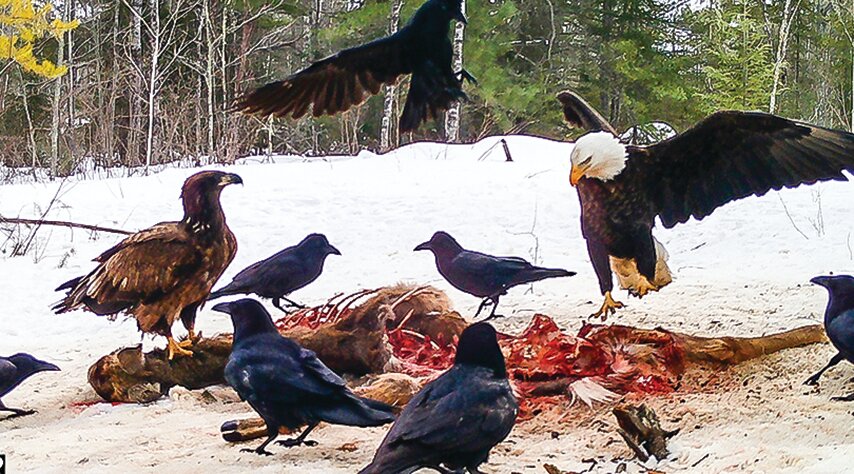Support the Timberjay by making a donation.
Study: Predators play key role in ecosystem health
REGIONAL— A new study, recently published in the journal Oikos, has confirmed that predators play an important role in the health of ecosystems beyond their effects on the behavior and …
This item is available in full to subscribers.
Attention subscribers
To continue reading, you will need to either log in to your subscriber account, or purchase a new subscription.
If you are a current print subscriber, you can set up a free website account and connect your subscription to it by clicking here.
If you are a digital subscriber with an active, online-only subscription then you already have an account here. Just reset your password if you've not yet logged in to your account on this new site.
Otherwise, click here to view your options for subscribing.
Please log in to continue |
Study: Predators play key role in ecosystem health
REGIONAL— A new study, recently published in the journal Oikos, has confirmed that predators play an important role in the health of ecosystems beyond their effects on the behavior and resiliency of prey populations.
The study, co-authored by Tom Gable, with the Voyageur Wolf Project, has found that predators create patchy ecological hotspots across natural landscapes as a result of their feeding behavior, which helps to distribute food sources and nutrients across the landscape. In addition, by keeping some prey species, like beaver, in check, they can sustain forest habitat that might otherwise be impacted by flooding or overgrazing.
By analyzing both empirical and theoretical data, the study concluded that the carcasses left behind by medium-to-large predators are a major benefit to a wide range of species, including other smaller predators as well as scavengers like eagles and ravens. The carcasses also distribute nutrients contained in their tissues onto the land, where it benefits plant growth that subsequently feeds new prey populations.
“Carrion is an essential yet often-overlooked ecosystem component that drives myriad inter-specific interactions between predators, scavengers, and local invertebrate, plant and soil communities,” note the authors of the study. “And predators, particularly large carnivores, play a key role in generating carrion within ecosystems through predation.”
Predator dens or home sites also become ecosystem hotspots due to the accumulation of prey remains as well as predator scat, all of which adds to the nutrient levels in the soil and increases the activity of insect and other invertebrates in the soil.
“We’ve known for some time now that predators have unique effects on ecosystems,” said Gable, a postdoctoral researcher at the University of Minnesota’s College of Food, Agricultural and Natural Resource Sciences. “Even so, most of the research has been focused on understanding how predators affect ecosystems by altering prey populations. In reality, there are a whole host of other, lesser-known ways that individual predators can leave a distinct imprint on ecosystems.”
The researchers note that it is becoming increasingly important to recognize and understand the full spectrum of roles that predators play in ecosystems in order to better manage and conserve their populations.
“As humans, we often like to think that we have the ability to mimic the ecological roles of predators, and therefore it may be okay to have some areas devoid of large predators,” said Sean Johnson-Bice, lead author of the study and a Ph.D. candidate at the University of Manitoba. “However, our work shows that there is such a wide diversity of ways that individual predators affect ecosystems that we could never realistically replicate their effects across entire ecosystems.”
The researchers hope that this research will ultimately help advance the conservation and management of predator populations, many of which are declining globally due habitat destruction, human encroachment, hunting and poaching, and climate change.






